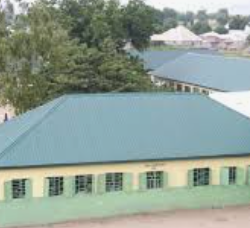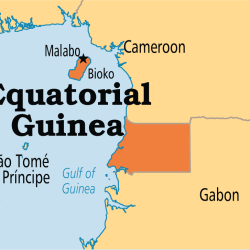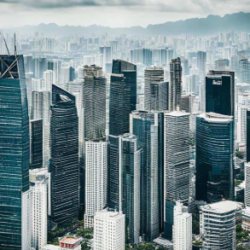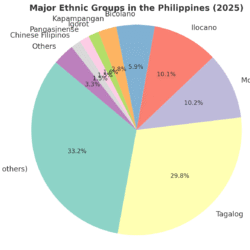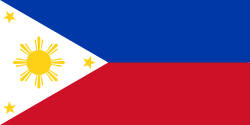Philippines is the only predominantly Catholic country in Asia, with about 79-81% of its population identifying as Roman Catholic. This is a result of over 300 years of Spanish colonization (1565–1898), during which Catholicism was widely spread throughout the islands.
The Philippines’ Catholic heritage is one of the strongest in the world, shaping its traditions, values, and way of life. It remains Asia’s largest Catholic country and continues to influence religious and cultural practices worldwide.
🌏 Why Philippines is Predominantly Catholic
1. Spanish (1565–1898) Brought Catholicism
- When the Spanish arrived in 1521, led by Ferdinand Magellan, they introduced Christianity to the native people.
- By 1565, Spain began its full colonization, using missionaries to convert Filipinos to Catholicism.
- The Spanish built churches, schools, and religious institutions, making Catholicism a central part of Filipino life.
2. The Influence of Catholic Missions
- Spanish friars (priests from the Augustinians, Franciscans, Jesuits, and Dominicans) played a huge role in converting Filipinos.
- They taught Christian values, Spanish culture, and religious traditions.
- Major towns were built around churches, reinforcing the importance of Catholicism in daily life.
3. The Role of Catholic Festivals & Traditions
- Filipinos embraced Catholic traditions, blending them with pre-colonial customs.
- Fiestas (Religious Festivals) like Sinulog, Pahiyas, and Ati-Atihan celebrate saints and religious events.
- Holy Week (Semana Santa) is observed with processions, fasting, and reenactments of Christ’s Passion.
- Simbang Gabi (Night Mass) is a special Christmas tradition where Filipinos attend early morning masses for 9 days before Christmas.
4. The Philippines Remained Catholic Even After Spanish Rule
- When Spain lost the Philippines to the U.S. in 1898, Catholicism remained deeply rooted in society.
- The American period (1898–1946) introduced Protestantism, but Catholicism remained dominant.
🕊️ The Catholic Church’s Impact on Filipino Society
Even today, Catholicism strongly influences Philippine culture, government, and daily life:
- Many national holidays are Catholic celebrations (e.g., Christmas, Easter, and All Saints’ Day).
- The Catholic Church plays a role in politics, often speaking on moral and social issues.
- More than 86% of Filipinos still practice Catholic traditions like attending Sunday Mass, baptism, weddings, and fiestas.
📌 Other Christian Countries in Asia
While the Philippines is the only predominantly Catholic nation in Asia, other Asian countries have Christian populations:
- East Timor – Around 97% Christian (mostly Catholic), but it’s not always included as part of Asia.
- Lebanon – Has a significant Christian population, but not a majority.
- South Korea – Has a growing Christian population (30% Christian, mostly Protestant and Catholic).


⛪ Filipino Religious Traditions and Famous Churches in the Philippines
The Philippines has a deeply rooted Catholic culture, with centuries-old traditions and some of the most beautiful churches in Asia. Let’s explore some of the most important religious traditions and famous churches in the country.
🌟 Religious Traditions in the Philippines
1. Simbang Gabi (Night Mass) – A Christmas Tradition
- Simbang Gabi is a nine-day series of pre-dawn masses held from December 16 to December 24.
- It is one of the oldest Christmas traditions in the country, introduced by Spanish missionaries in the 1600s.
- The masses are held at 4:00 AM, and it is believed that completing all nine masses will grant a special wish.
- After the mass, Filipinos enjoy traditional Christmas snacks like bibingka (rice cake) and puto bumbong (purple sticky rice cake).

2. The Feast of the Black Nazarene (Traslación) – January 9
- The Black Nazarene is a life-sized statue of Jesus carrying a cross, believed to be miraculous.
- Every January 9, millions of barefoot devotees join a procession (Traslación) in Manila to honor the statue.
- The procession lasts for hours (sometimes over 24 hours!), and devotees try to touch the statue for blessings.
3. Holy Week (Semana Santa) – Most Important Religious Event
- Holy Week (the last week of Lent) is the most sacred religious observance in the Philippines.
- Filipinos participate in:
- Palm Sunday – Carrying palm leaves to church, symbolizing Jesus’ entry into Jerusalem.
- Pabasa – A non-stop chanting of the Passion of Christ.
- Good Friday Processions – Reenactments of Jesus’ crucifixion, with some devotees even carrying crosses or self-flagellating.
- Easter Sunday – The Salubong (meeting of the resurrected Jesus and Mary) is celebrated with early morning processions.
4. Sinulog Festival – Honoring Santo Niño (January, Cebu City)
- The Sinulog Festival is one of the biggest and most colorful religious festivals in the Philippines.
- It celebrates the Santo Niño (Child Jesus), a gift from Ferdinand Magellan to the local ruler of Cebu in 1521.
- The festival features street dancing, parades, and grand processions.
- Other Santo Niño festivals include Ati-Atihan (Aklan) and Dinagyang (Iloilo).
5. Flores de Mayo & Santacruzan (May – A Tribute to the Virgin Mary)
- Flores de Mayo is a month-long celebration honoring the Virgin Mary, with daily flower offerings in churches.
- Santacruzan is a grand parade held at the end of May, featuring beautifully dressed women representing religious figures.
6. All Saints’ Day & All Souls’ Day (Undas) – November 1 & 2
- Undas is a time for Filipinos to honor their deceased loved ones by visiting cemeteries.
- Families light candles, offer flowers, and pray for the dead.
- It is similar to Mexico’s Día de los Muertos (Day of the Dead).
🏛️ Famous Churches in the Philippines
1. San Agustin Church (Manila) – Oldest Church in the Philippines
- Built in 1607, San Agustin Church is the oldest stone church in the country and a UNESCO World Heritage Site.
- Located in Intramuros, Manila, it has survived many earthquakes and wars.
2. Quiapo Church (Manila) – Home of the Black Nazarene
- Quiapo Church is famous for housing the Black Nazarene, a miraculous dark-skinned statue of Jesus.
- Every January 9, millions of devotees join the Traslación (Black Nazarene Procession).
3. Basilica Minore del Santo Niño (Cebu) – Oldest Religious Relic in the Philippines
- The Basilica Minore del Santo Niño in Cebu City houses the Santo Niño de Cebu, the oldest Catholic relic in the country.
- This Child Jesus statue was given by Ferdinand Magellan to Rajah Humabon’s wife in 1521.
4. Paoay Church (Ilocos Norte) – A UNESCO World Heritage Site
- The San Agustin Church of Paoay is famous for its baroque architecture and massive buttresses that help it withstand earthquakes.
- It is a UNESCO World Heritage Site and one of the most photographed churches in the Philippines.
5. Miag-ao Church (Iloilo) – Fortress Church Against Pirates
- Built in 1797, Miag-ao Church is known for its thick walls and watchtower-like design to protect against pirate attacks.
- Its golden-yellow stone facade features carvings of a coconut tree and St. Christopher carrying the Child Jesus.
6. Minor Basilica of Our Lady of Peñafrancia (Naga City)
- This church is home to the Nuestra Señora de Peñafrancia, the patroness of the Bicol region.
- Every September, the Peñafrancia Festival attracts millions of devotees in one of the biggest Marian festivals in the country.
7. Manaoag Church (Pangasinan) – Miraculous Shrine
- The Minor Basilica of Our Lady of the Rosary of Manaoag is one of the most visited pilgrimage sites in the Philippines.
- Many Filipinos believe that prayers made here bring miracles and blessings.
8. Callao Cave Chapel (Cagayan) – A Natural Underground Church
- The Callao Cave Chapel is inside a natural limestone cave and has an altar illuminated by sunlight.
- It is one of the most unique places to worship in the Philippines.


